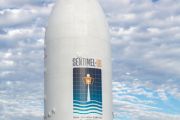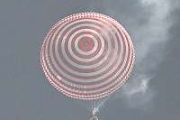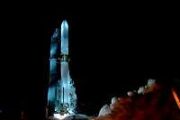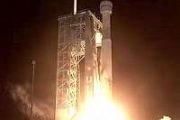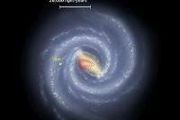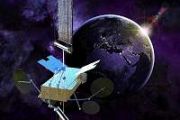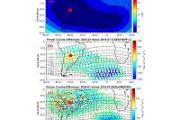
Copernical Team
Axiom Space's second crewed mission gets green light
 Axiom Space's second, entirely private space mission is on track for a Sunday launch aboard a SpaceX Dragon spacecraft to the International Space Station from Kennedy Space Center in Florida, officials said Monday.
The launch is planned for 5:37 p.m. EDT from Launch Complex 39A. Should bad weather set in, controllers could try again the next day.
If the weather does not cooperate
Axiom Space's second, entirely private space mission is on track for a Sunday launch aboard a SpaceX Dragon spacecraft to the International Space Station from Kennedy Space Center in Florida, officials said Monday.
The launch is planned for 5:37 p.m. EDT from Launch Complex 39A. Should bad weather set in, controllers could try again the next day.
If the weather does not cooperate EarthCARE, when a satellite sheds light on the clouds
 EarthCARE is an important new satellite designed and built by Airbus to help scientists better understand climate change on clouds, aerosols and radiation. Under construction for the European Space Agency (ESA), Airbus successfully completed the Electro-Magnetic Compatibility tests in April 2023 and now this latest ESA "Earth Explorer" satellite is getting closer to launch next year.
The i
EarthCARE is an important new satellite designed and built by Airbus to help scientists better understand climate change on clouds, aerosols and radiation. Under construction for the European Space Agency (ESA), Airbus successfully completed the Electro-Magnetic Compatibility tests in April 2023 and now this latest ESA "Earth Explorer" satellite is getting closer to launch next year.
The i New deal inked to space test meta-optical surfaces
 A new engineering study has been commissioned by the European Space Agency (under PECS, the Program for European Cooperating States), to prove the reliability of meta-optical elements for space use in a collaboration between the ESA, Bulgarian start-up company LaboraXpert and TMOS, the Australian Research Council Centre of Excellence for Transformative Meta-Optical Systems.
In the first st
A new engineering study has been commissioned by the European Space Agency (under PECS, the Program for European Cooperating States), to prove the reliability of meta-optical elements for space use in a collaboration between the ESA, Bulgarian start-up company LaboraXpert and TMOS, the Australian Research Council Centre of Excellence for Transformative Meta-Optical Systems.
In the first st InVADER mission to test its robotic laser divebot on a deep-sea expedition
 A team of scientists and engineers from the SETI Institute, Impossible Sensing, NASA JPL, and other institutions will test their innovative robotic laser system on a deep-sea expedition aboard the E/V Nautilus. The mission, called InVADER (In-situ Vent Analysis Divebot for Exobiology Research), aims to advance technologies to explore, characterize and sample the seabed here on Earth. In particul
A team of scientists and engineers from the SETI Institute, Impossible Sensing, NASA JPL, and other institutions will test their innovative robotic laser system on a deep-sea expedition aboard the E/V Nautilus. The mission, called InVADER (In-situ Vent Analysis Divebot for Exobiology Research), aims to advance technologies to explore, characterize and sample the seabed here on Earth. In particul Research announcement for technology development leveraging ISS is open for concepts
 The International Space Station National Laboratory is soliciting flight concepts for technology development that would utilize the space-based environment of the orbiting laboratory.
This solicitation, "Technology Advancement and Applied Research Leveraging the ISS National Lab," is open to a broad range of technology areas, including chemical and material synthesis in space, bonding, tra
The International Space Station National Laboratory is soliciting flight concepts for technology development that would utilize the space-based environment of the orbiting laboratory.
This solicitation, "Technology Advancement and Applied Research Leveraging the ISS National Lab," is open to a broad range of technology areas, including chemical and material synthesis in space, bonding, tra LiveEO and Capella Space offer fast, high-res SAR imaging to asset managers
 LiveEO, a market leader in Earth observation analytics and solutions for high-value infrastructure and energy asset monitoring, has announced a partnership with Capella Space, the world's leading provider of high-resolution synthetic aperture radar (SAR) imagery. As the first certified Capella Analytics Partner, LiveEO will integrate all-weather, 24/7 SAR imagery from Capella Space into its adva
LiveEO, a market leader in Earth observation analytics and solutions for high-value infrastructure and energy asset monitoring, has announced a partnership with Capella Space, the world's leading provider of high-resolution synthetic aperture radar (SAR) imagery. As the first certified Capella Analytics Partner, LiveEO will integrate all-weather, 24/7 SAR imagery from Capella Space into its adva Terran Orbital PTD-3 enables 200Gbits space-to-ground optical link
 Terran Orbital Corporation (NYSE: LLAP) announced a significant achievement in space-to-ground communication, successfully enabling a 200 gigabits per second optical link through the Pathfinder Technology Demonstrator 3 (PTD-3) satellite. The NASA satellite hosts the TeraByte InfraRed Delivery (TBIRD) payload, funded by NASA's Space Communications and Navigation (SCaN) and developed by MIT Linco
Terran Orbital Corporation (NYSE: LLAP) announced a significant achievement in space-to-ground communication, successfully enabling a 200 gigabits per second optical link through the Pathfinder Technology Demonstrator 3 (PTD-3) satellite. The NASA satellite hosts the TeraByte InfraRed Delivery (TBIRD) payload, funded by NASA's Space Communications and Navigation (SCaN) and developed by MIT Linco Space Forge enables reusable satellites with new way of returning from space to Earth
 Space Forge reveals their patent protected design of a planet-friendly reusable re-entry system, which will enable the low cost and reliable return of satellites to Earth.
Although the cost of launching satellites into space has become lower through the use of reusability, all current commercial space return vehicles use ablative heat shields which require replacement after every flight. S
Space Forge reveals their patent protected design of a planet-friendly reusable re-entry system, which will enable the low cost and reliable return of satellites to Earth.
Although the cost of launching satellites into space has become lower through the use of reusability, all current commercial space return vehicles use ablative heat shields which require replacement after every flight. S Sales rocket for Zenno's fuel-free satellite pointing system
 Zenno Astronautics (Zenno) reports has surpassed $75M in product sales (USD 48M) for its world-first superconducting magnetorquer for spacecraft attitude control, the Z01.
Built on Zenno's proprietary superconducting magnet technology, Z01 is a fuel-free satellite pointing system designed to significantly increases the range of capabilities for attitude control in space, including fully au
Zenno Astronautics (Zenno) reports has surpassed $75M in product sales (USD 48M) for its world-first superconducting magnetorquer for spacecraft attitude control, the Z01.
Built on Zenno's proprietary superconducting magnet technology, Z01 is a fuel-free satellite pointing system designed to significantly increases the range of capabilities for attitude control in space, including fully au NASA calls end to Lunar Flashlight mission after some tech successes
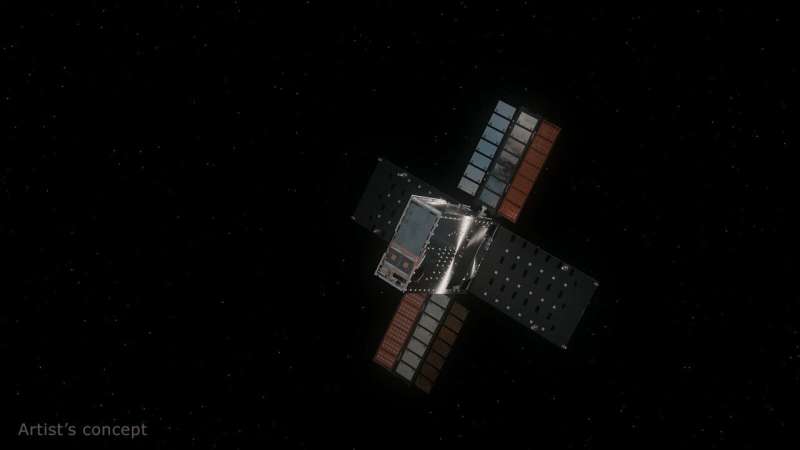
While the CubeSat couldn't reach the lunar South Pole to help seek ice, it fulfilled several technology goals that will empower future missions for the benefit of humanity.
NASA's Lunar Flashlight launched on Dec. 11, 2022, to demonstrate several new technologies, with an ultimate goal to seek out surface ice in the permanently shadowed craters of the moon's South Pole. Since then, the briefcase-size satellite's miniaturized propulsion system—the first of its kind ever flown—proved unable to generate enough thrust to get into lunar orbit, despite months of effort by the operations team.




